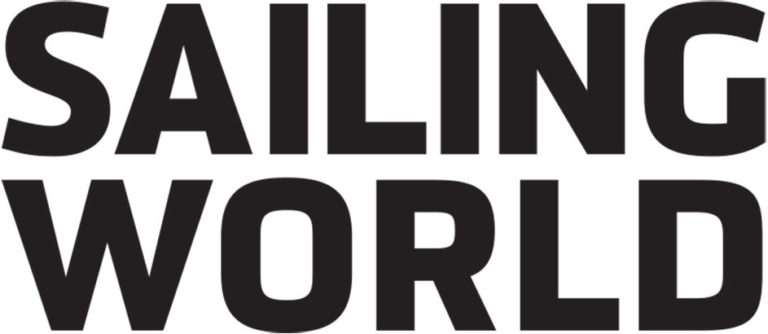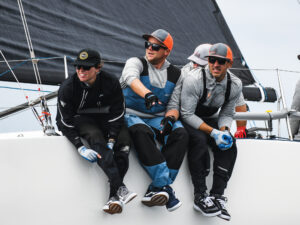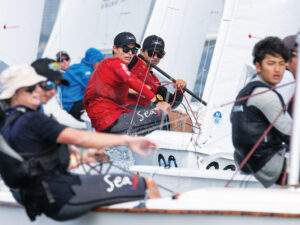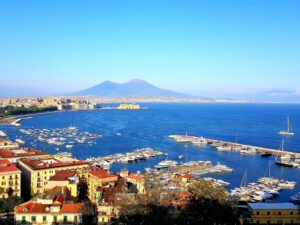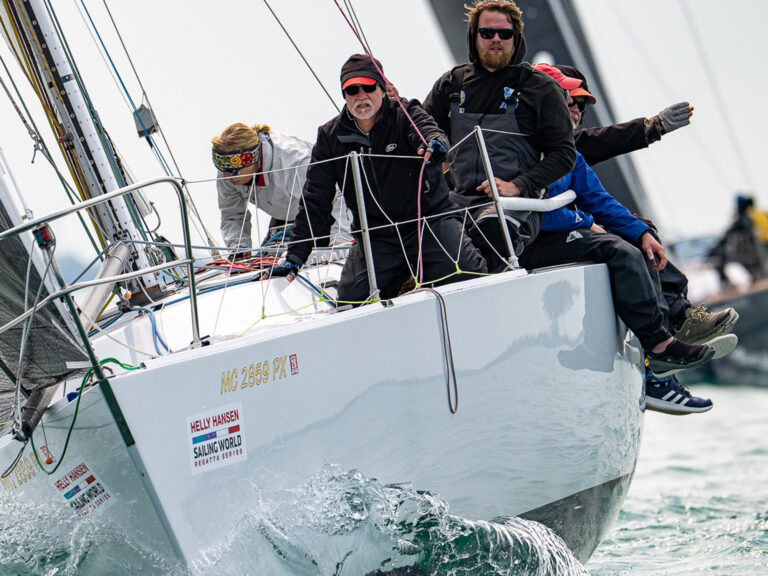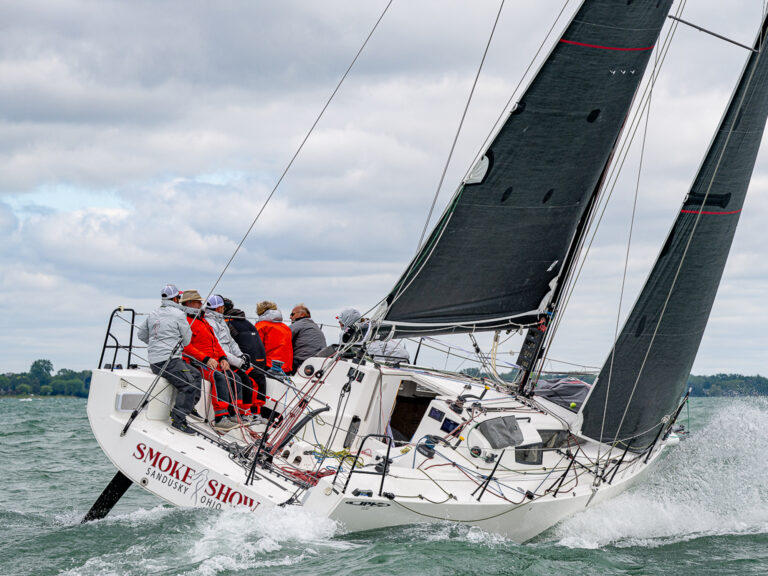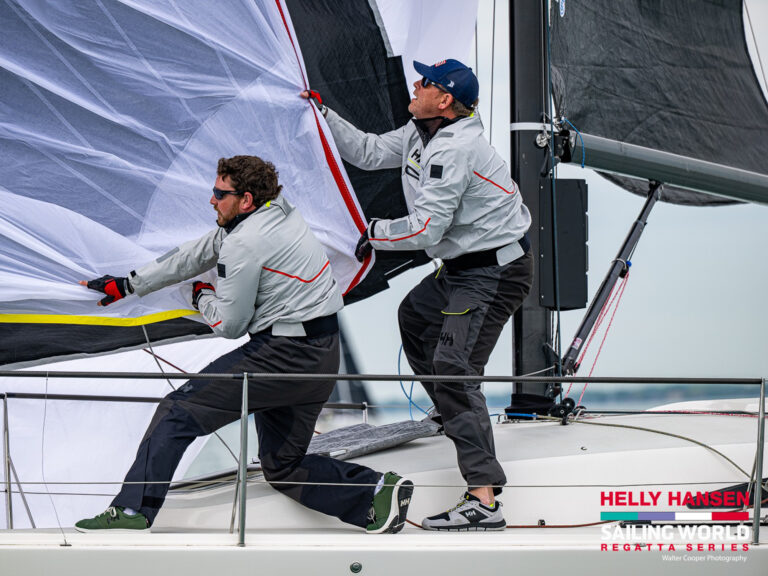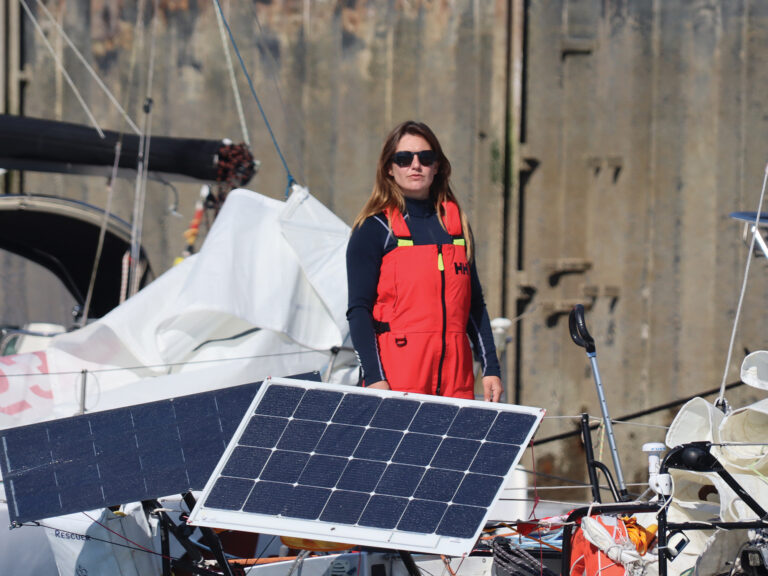
A one-design class fades away when either the building stops or the diehards and old-timers move on. Without sustained and creative efforts to replenish members, the outcome is always inevitable. That’s not the case for the International Lightning Class, however, which is unique because of its generational continuum and the efforts of its faithful to hatch schemes that freshen the bloodlines and get new faces into the slab-sided dinghy designed in 1938 by the late and great Olin Stephens. The class’s perpetual youth boat-grant program, which puts a competitive loaner into the hands of a young team for a season, is successful, but its impact is granular. To shore up another generation, in 2024, the class has cast a wider net with the creation of an “Under 32” movement.
The new endeavor is aimed at recruiting wayward postcollegiate sailors—and who better to do so than the class’s young adult members with all the right connections? Build it, invite them, and they will come, they said, and thus the U32 Lightning Invitational was born.
“It was originally an under-30 concept, which a few other classes already have,” says Jenna Probst, a second-generation Lightning sailor from Ontario’s Buffalo Canoe Club, which remains the cradle of North American Lightning civilization. “But we had a few friends who were already 31, and U32 just had a better ring to it.”
Probst, who professes her undying loyalty to the class, champions its international status and the high-level racing it’s known for, but it’s also the familial culture, the mentoring, the fun, and the strong youthful base that she advocates. She and a committee of her peers were tasked by a handful of the class’s “Over 32s” with launching, managing, and leading all aspects of the inaugural invitational regatta at the Canoe Club this past August. “That was the most important thing,” class president David Starck says. “We didn’t want another regatta where the seasoned adults are running the show. We were there to help, advise and volunteer, but that’s it.”
Probst and her U32 committee co-chair, Maya Weber, another Lightning devotee of the Canoe Club, says that the effort started in early 2024 when Starck prompted them to recruit more postcollegiate sailors (an age range of 21-32). “The boat-grant program is a good opportunity to get young people into the class,” Weber says, “but with this, we want to provide a taste of the class for those who don’t have a full summer to commit to the boat grant.”
To pull off the inaugural event in short order, they turned to their Canoe Club connections for charter boats and stuck a pin on the calendar for late August, two weeks after the class’s North American Championship in Ontario. Then they went hard at recruiting.
“We did a lot of targeted social media and marketing, and went directly to different college sailing teams,” Probst says. “We had someone at College Nationals talking about it and hanging up posters and whatnot, but the biggest thing was just word of mouth. You can have all the right marketing, but you still need to actually talk to people and be like, ‘Hey, this is an awesome event.”
The target was 20 teams, but somehow, and unexpectedly, they got to 32—a good problem to have. “I was surprised,” Weber says. “It was absolutely incredible how many people were visiting the BCC or the Lightning for the first time and came away being like, ‘Wow, this was a great experience.’ I’m just excited to see where it goes.”
The goal was to have new people experience the class, Probst says. Their postregatta analysis confirmed that 31 percent of the sailors were new to the class, and 9 percent were sailors returning after a hiatus of two years or more. The class gained 39 new members. Twenty-four sailors—25 percent—signed up as individuals and were paired with teams.
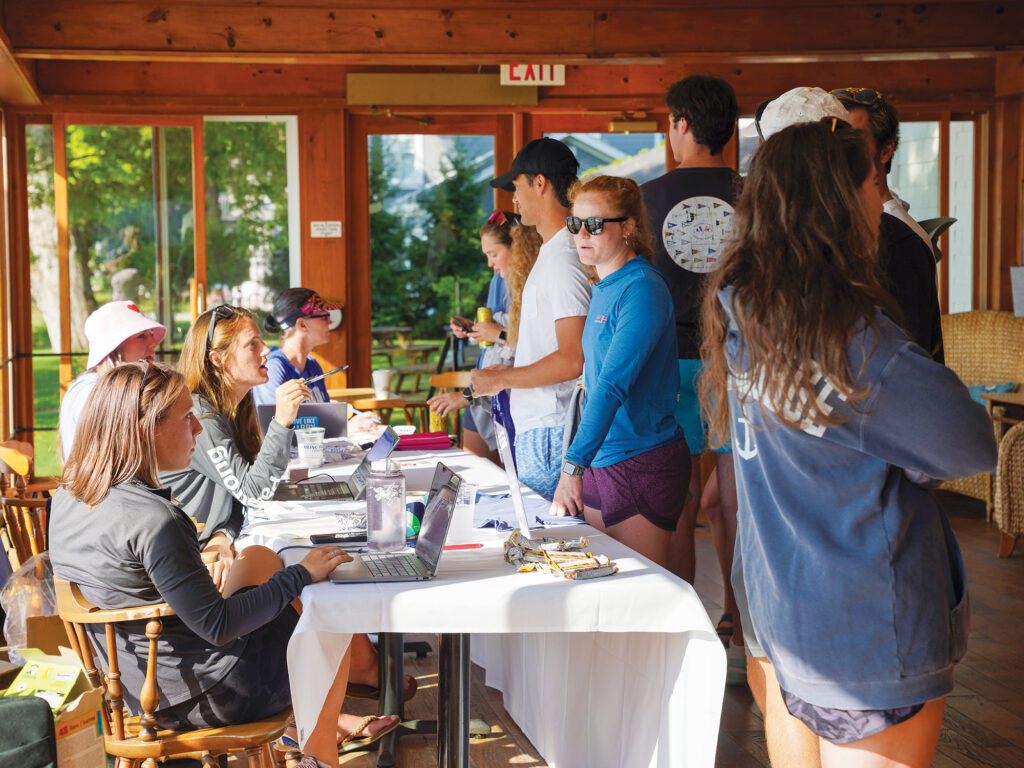
“We know a lot of friends who sailed in college and then don’t really know what to do next, or what class to join,” she says. “So that was kind of our target: people who are looking for a good class that’s competitive but can be affordable. With the age demographic, you can’t just say, ‘Hey, come buy a boat and join the class,’ so we wanted to set up a good progression with a super-low-cost event, with free housing and a free boat.”
To set the hook deeper, participants were required to become a class member in order to have borrowed-boat insurance carried by the class. “In being a member, they’re also signed up to get all of the class communications, and there are now other class regattas that offer a discount for U32 members,” Probst says. “That was good to see because it encourages a younger generation who might be a little more cash-strapped to come and sail.”
There was no lack of O32s in the volunteer army, leading clinics and handling race-committee duties. President Starck deftly tended bar at the opening social at the BCC, and other local Lightning families hosted dinners on their front lawns. The U32s, meanwhile, were tasked with match-making teams, boat owners, and housing, all while ensuring a good time on and off the water. Providing people with the opportunity to sign up as individuals or as a team allowed new friendships to be forged, and name tags at social events helped to encourage conversations.
“The fun part was easy,” Probst says, “because everyone seemed to have a second- or third-degree connection from college or junior sailing. It was so cool to see people reconnect.”
While the U32s could control everything within their control, the one thing beyond their reach was wind. There wasn’t much of it, but they still managed to get three races on the first day, with a noncounting race back to the dock and a bucket of rum. For Weber, there was a silver lining to “not having our typical BCC conditions with 15 knots and Lake Erie rollers; it provided the perfect opportunity for those newer to the class who were just getting their feet wet to get a handle for the boat without having to deal with tricky conditions. And while we didn’t get to race on the second day, teams got the full Lightning boat part experience chatting and derigging all the borrowed boats together.”
Probst and Weber say that the point of the exercise was never about race results. It was the spearheading of a new initiative for the class, generating new friendships and interest in the class, while creating a model of sorts for this year’s hosts at Metedeconk River YC in New Jersey, in October, and beyond. For their collective efforts, the co-chairs and all involved were recognized by US Sailing with the “One Design Creativity Award” at the organization’s biannual Leadership Forum, but the next step for the class is spreading the movement to other regions in the US and other countries as well. “It seems like it was a great success and a great kind of lightning rod for the initiative moving forward,” Probst says. “We now have U32 in the US, but now we can also spread the initiative in Chile or Finland, encouraging growth and continued sailing beyond juniors. I think that’ll be a good next step.”
Innovating, evolving and growing—that’s how this legendary class continues to sail outside the pearly gates of one-design sailing.
